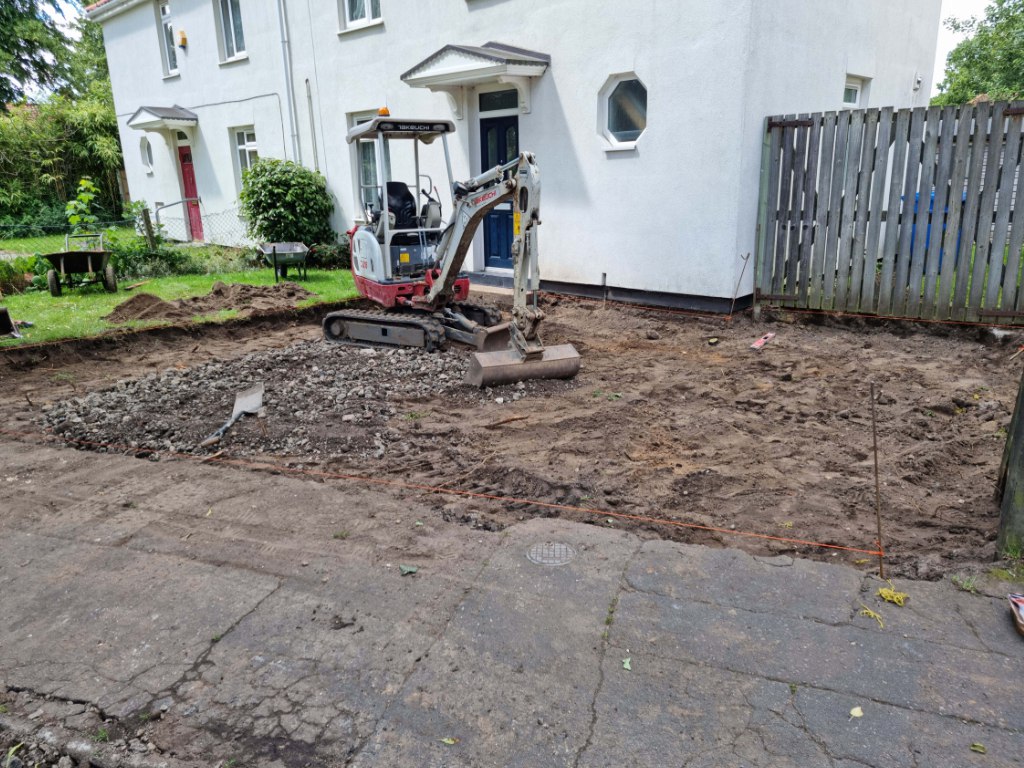Repairing Block Paving Driveways: When to Re-Lay vs Patch
Block paving driveways are a timeless and practical choice for homeowners, offering both durability and aesthetic appeal. However, even the most well-installed driveways can show signs of wear over time. Movement in the ground, heavy use, or poor drainage can cause uneven surfaces, sinking areas, or displaced blocks. When these problems occur, the key question becomes whether to patch repair the affected area or completely re-lay sections of the driveway.
For property owners in Swaffham, Norfolk, the team at Swaffham Driveways specialises in assessing the condition of block paving and providing professional advice on the most effective and long-lasting repair method.
Understanding the Causes of Block Paving Damage
Block paving is designed to withstand the pressures of regular use, but certain factors can compromise its stability and appearance. Recognising these causes early can help prevent more extensive damage later on.
Common Causes Include:
- Ground Movement: Natural settlement or shifting soil can cause blocks to sink or become uneven.
- Poor Drainage: Water accumulation beneath the surface can wash away the sub-base, leading to dips or cracks.
- Heavy Traffic: Frequent or heavy vehicle use can compact the sub-base and displace blocks over time.
- Weed and Moss Growth: Plant growth between joints can disturb the blocks and weaken the structure.
- Improper Installation: An inadequate base layer or incorrect compaction can cause long-term instability.
Once these issues begin to appear, it’s important to act quickly to prevent further deterioration.
Identifying the Type of Damage
Before deciding whether to re-lay or patch a block paving driveway, it’s essential to inspect the extent and nature of the problem.
Signs That Indicate Minor Damage:
- A few loose or cracked blocks.
- Small areas of unevenness or sunken sections.
- Moss or weeds in isolated joints.
- Localised water pooling after rain.
Signs That Indicate More Serious Issues:
- Widespread sinking or uneven areas across the driveway.
- Large sections where blocks have shifted significantly.
- Poor drainage affecting multiple areas.
- A compromised sub-base or failing edge restraints.
The distinction between minor and widespread damage will determine whether a patch repair is sufficient or if re-laying is the better long-term solution.
When to Patch Repair a Block Paving Driveway
Patch repairs are ideal for small, isolated problems that don’t affect the overall structure of the driveway. This approach involves lifting and re-bedding specific blocks or sections that have moved, cracked, or become loose.
Suitable Situations for Patching Include:
- Localised dips caused by small ground movements.
- Replacing a few damaged or stained blocks.
- Resolving small drainage issues.
- Restoring the appearance of individual worn areas.
Patch repairs are quick, effective, and help extend the lifespan of the driveway without the need for complete re-laying. However, it’s vital that the base beneath the repaired area is properly compacted and stabilised to prevent the issue from recurring.
When to Re-Lay a Block Paving Driveway
If the damage affects large portions of the surface or the sub-base has deteriorated, re-laying the affected section — or the entire driveway — is the most effective solution. This ensures that both the structure and the aesthetics are restored for long-term durability.
Indicators That Re-Laying Is Necessary:
- Substantial sinking across multiple sections.
- Drainage issues that cause standing water throughout the surface.
- Widespread block movement or loss of joint stability.
- A weakened or improperly installed sub-base.
- Significant age-related wear leading to uneven surfaces.
During a professional re-lay, the blocks are lifted, the sub-base is inspected and reinforced, and the surface is re-levelled before reinstalling the blocks. This process restores the integrity of the entire driveway and improves its load-bearing capacity.
Preventative Maintenance Tips for Block Paving
Once your driveway has been repaired or re-laid, routine maintenance can help prevent future issues and keep it looking its best.
Key Maintenance Recommendations:
- Regular Cleaning: Remove debris, moss, and algae to prevent block movement and surface staining.
- Re-Sand Joints: Periodically brush kiln-dried sand into the joints to maintain interlock and stability.
- Check Drainage: Ensure water flows away from the surface to avoid sub-base erosion.
- Prompt Repairs: Address small dips or cracks before they expand into larger problems.
Regular inspections by professionals like Swaffham Driveways can also help detect early signs of wear, allowing timely maintenance that protects your investment.
Why Professional Assessment Matters
While patch repairs can seem straightforward, identifying underlying causes such as sub-base instability or poor drainage requires experience. Attempting to fix surface issues without addressing the root cause may lead to the same problems returning. The experts at Swaffham Driveways assess each case individually, determining whether a targeted repair or a full re-lay is the best option for long-term performance and appearance.
Conclusion
Knowing when to patch and when to re-lay a block paving driveway can make a significant difference in cost, longevity, and visual appeal. Minor surface imperfections can often be corrected with simple patching, but widespread or structural issues require professional re-laying to ensure lasting results. Homeowners in Swaffham, Norfolk can trust Swaffham Driveways for expert advice, precise workmanship, and durable driveway repairs that restore both function and beauty to their outdoor space.
Call us on: 01760 308 698
Click here to find out more about Swaffham Driveways
Click here to complete our contact form and see how we can help with your driveway needs.

